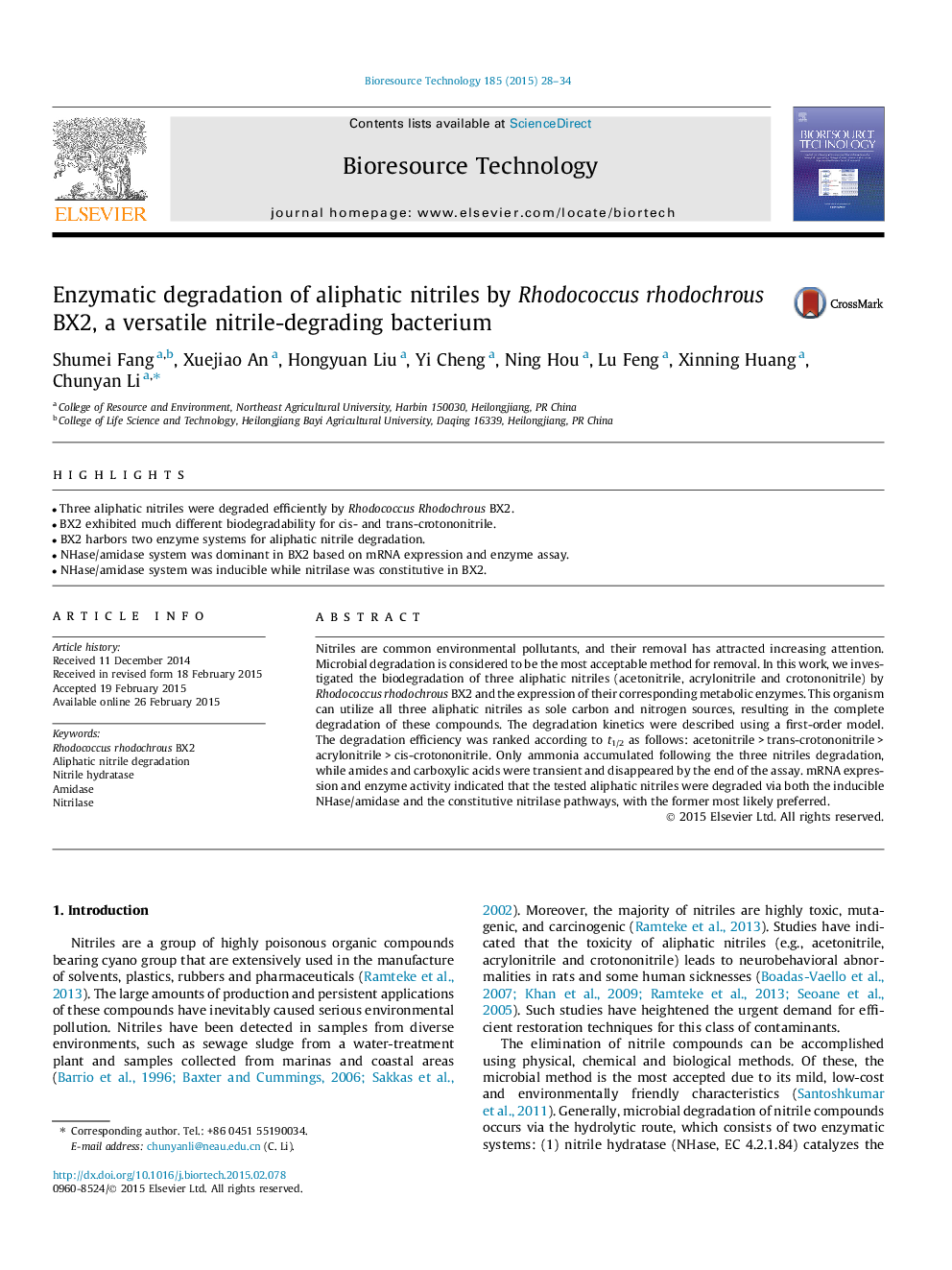| Article ID | Journal | Published Year | Pages | File Type |
|---|---|---|---|---|
| 679828 | Bioresource Technology | 2015 | 7 Pages |
•Three aliphatic nitriles were degraded efficiently by Rhodococcus Rhodochrous BX2.•BX2 exhibited much different biodegradability for cis- and trans-crotononitrile.•BX2 harbors two enzyme systems for aliphatic nitrile degradation.•NHase/amidase system was dominant in BX2 based on mRNA expression and enzyme assay.•NHase/amidase system was inducible while nitrilase was constitutive in BX2.
Nitriles are common environmental pollutants, and their removal has attracted increasing attention. Microbial degradation is considered to be the most acceptable method for removal. In this work, we investigated the biodegradation of three aliphatic nitriles (acetonitrile, acrylonitrile and crotononitrile) by Rhodococcus rhodochrous BX2 and the expression of their corresponding metabolic enzymes. This organism can utilize all three aliphatic nitriles as sole carbon and nitrogen sources, resulting in the complete degradation of these compounds. The degradation kinetics were described using a first-order model. The degradation efficiency was ranked according to t1/2 as follows: acetonitrile > trans-crotononitrile > acrylonitrile > cis-crotononitrile. Only ammonia accumulated following the three nitriles degradation, while amides and carboxylic acids were transient and disappeared by the end of the assay. mRNA expression and enzyme activity indicated that the tested aliphatic nitriles were degraded via both the inducible NHase/amidase and the constitutive nitrilase pathways, with the former most likely preferred.
